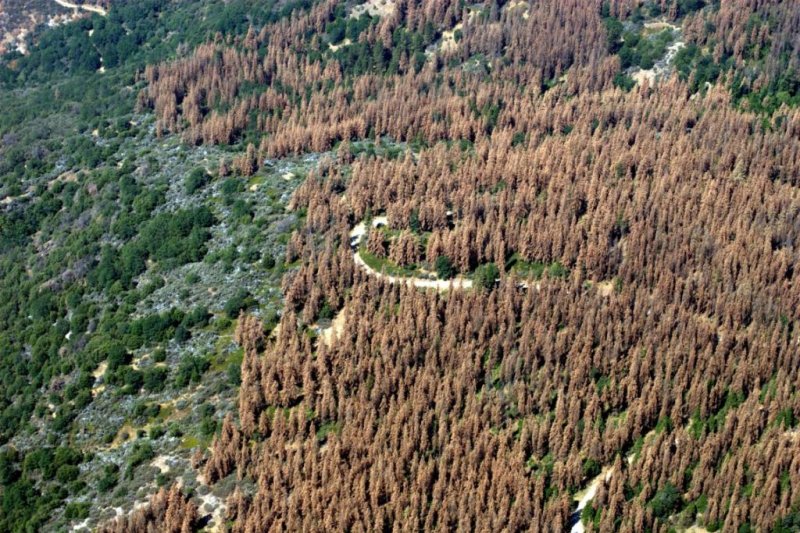An aerial photo shows widespread tree loss in Central California's Sierra Nevada Mountains. Photo by U.S. Forest Service
May 16 (UPI) -- Shrinking forests don't just have local or regional consequences. New research suggests the loss of forests on one coast can affect forest health on the opposite coast.
In a new study, published this week in the journal Environmental Research Letters, scientists at the University of Washington detailed the linked fates of forests on the East and West coasts of the United States.
Die-offs on one coast, whether caused by wildfire, drought or disease -- or some combination thereof -- can have a measurable impact on the health of sections of forest a few thousand miles away.
"These smaller areas of forest can have continental-scale impacts, and we really need to be considering this when we're thinking about ecological changes," Abigail Swann, an assistant professor of atmospheric sciences and biology at Washington, said in a news release.
The new research is based on a 2016 study that looked at the global impact of deforestation, specifically how the loss of a significant chunk of forest -- the Amazon rainforest, for example -- would affect global growing conditions.
The latest analysis takes a slightly scaled-down approach, modeling the impact of the loss of the 13 most heavily-treed regions in the United States. Simulations showed the loss of trees in the Pacific Southwest region, though physically the smallest region, would have the largest impact on plant growth across the continent.
Scientists will need to fund additional studies to identify the specific ecological mechanisms responsible for the relationship between regional forests and continental plant growth.
"Forest loss is disrupting or changing the flow patterns in the atmosphere that is leading to a slightly different summertime climate in the eastern part of the country," Swann said. "It's very analogous to El Niño or 'the blob,' something that's occurring that causes the atmosphere to move around, which causes these warmer or cooler conditions, or wetter and drier conditions, somewhere else."
The models showed the loss of trees in Western regions tend to negatively affect trees on the East Coast. As a result of fire, disease, pests, drought and human development, trees are on the decline throughout the West Coast and the Rockies.
Since 2010, California forests have lost 130 million trees, and a study published earlier this year suggests climate trends in the Golden State are likely to allow shrubs to outcompete trees in the decades ahead.
"There's some pretty extensive, widespread forest loss going on," Swann said. "The changes we made in the model are bigger, but they're starting to converge with things that we're actually seeing."















